Release Notes for Linux Mint 5 Elyssa
Introduction
This is Linux Mint 5, codename Elyssa, based on Daryna and compatible with Ubuntu Hardy and its repositories.
List of new features
1. mintMenu improvements
In Daryna, mintInstall and the Software Portal made it easy to install applications. In Elyssa mintMenu is making it easy to remove them. You don't need to open synaptic or to launch a terminal anymore, if you want to uninstall an application, simply right-click on it in the menu and select “Uninstall”.
A dialog box will appear listing the related packages and dependencies.
Within the same context menu you can also choose whether you want that particular application to be automatically launched when you log in. It was already possible to do this with the "Session" tool from the Control Center, it's now possible directly from within mintMenu.
MintMenu now comes with a brand new configuration screen which lets you configure the following options:
- Whether to show the sidepane (where parts of the menu end up after you hide them)
- Whether to show recent documents
- Whether to show comments for applications
- Whether to swap names and generic names in the list of favorites
- Whether to show icons for categories
- Whether filtering should be done by clicking on categories or by hovering (mouse over)
- The hover delay
- Icon sizes for the main button, the applications and the favorites
- Main button text and whether to show an icon
- Custom colors for headings, borders and backgrounds
- The number of columns in the favorites
- The borders width
From the configuration screen you can activate a new plugin which displays your 10 most recently opened documents.
The "system tools" and "others" categories were merged in with "administration" to make the menu smaller and to bring less confusion as to where to find configuration tools.
The speed of the menu was also improved and its memory usage reduced.
Favorites now support drag and drop and can be moved around and arranged with the mouse.
2. mintUpdate improvements
MintUpdate was introduced in Daryna and quickly became one of the most popular tools on the Linux Mint desktop. It came to our attention that a lot of people weren't aware of how it worked internally (for instance, the difference between its user and admin runtime modes). For this reason we developed an information screen from which the active logs can be read, and the runtime mode and process id can be seen.
The auto-refresh feature is now more flexible. You can configure it to the minute but now also all the way up to a year.
When you log in and mintUpdate starts in user mode it now checks for an Internet connection. If none is found it waits for 30 seconds before retrying to connect and eventually reporting the lack of connection. This new feature is particularly interesting for people whose connection to the Internet is activated at log in and sometimes after mintUpdate is started.
You can now manually refresh mintUpdate, and directly access its preferences and information screens by right clicking on the icon in the system tray.
A mintUpdate instance running in admin mode kills all other instances of mintUpdate. One running in user mode is only allowed to start if no admin-mode mintUpdate is already running. In a multi-user environment this created problems. MintUpdate now fails quietly in user mode and running it from the menu (admin mode) takes priority over all other instances.
3. mintInstall improvements
.mint files can be quite complex as there's almost nothing you can do in a terminal that a .mint file can't do. In practice though, 99% of the .mint files present in the Software Portal consist in describing the installation of an application using APT. Most of these files describe the installation of only one package, and in most cases this package is present in the default repositories. In Daryna mintInstall used to backup the local sources.list, define its own, and then restore things as they were. This resulted in APT being told to update twice. In Elyssa, the mintInstall client checks if the packages are present within the repositories defined on your system, if they are the client gives you the choice of whether you want to use your sources.list ("local repositories") or the one coming with the file ("default repositories"). The default selection is "local" and as it basically saves 2 APT updates the installation of the application via mintInstall is consequently much faster.
The search dialog now supports the GetDeb.net software portal. GetDeb uses raw DEB packages and no meta-information so downloads can be slow and dependencies (if any) won't be solved automatically, but it features packages that aren't available anywhere else on the Internet. The portal can be searched directly from mintInstall and the installation of the .DEB packages is handled by GDebi.
The search dialog now also supports APT itself. This is a convenient shortcut as mintInstall is much lighter than synaptic and more user friendly than the APT command line utilities. From mintInstall you can now search for a particular package, show its description (which also lists the files it contains) or even install it.
Improvements were made to the layout and the navigation within the Linux Mint Software Portal. A batch .mint maker was developed and the portal should feature about 10 times more applications than it did for Daryna. Applications are also organized in sub-categories and almost all of them now come with a screenshot.
Release-specific information was moved to a new package called mintsystem, so mintInstall is now release agnostic. This should make it easier for future versions of mintInstall to be backported on older releases or even used on compatible distributions (all distributions directly or indirectly based on Debian Testing or Debian Unstable).
4. Improvements in other tools
The network autobrowsing feature was removed from mintDesktop as it wasn't mature enough to be part of this LTS release.
Gnome 2.22 introduced its own compositing manager which can now be activated/deactivated from mintDesktop.
Mintupload's email feature was removed and replaced with a "Copy" button, which simply copies the shared URL to the buffer.
5. Desktop improvements
Gnome-Do doesn't just come installed by default in Elyssa, it's configured to run in the background. Press SUPER+SPACE and it should appear. From there you can quickly launch an application or use any of the advanced features provided by this tool. For more information about Gnome-Do visit this link
.You can now change your wallpaper by right-clicking on an image and by selecting "Set as Wallpaper".
You can now check the MD5 signature of an ISO file by right-clicking on the file and by selecting "MD5 Sum".
You can now open a folder as root by right-clicking on that folder and by selecting "Open as root". This is a powerful but also a dangerous feature. A warning message will remind you that you're in root mode, a file browser called XFE will appear (the reason for it not being Nautilus is precisely because it looks different. This way you can associate the different look and feel with the fact that this application is run as root). From there on you've got unlimited powers so be careful because everything you launch from XFE, you launch as root.
The Gedit text editor was configured not to create "~" files anymore. This feature although sometimes useful was often annoying. It is still available from within Gedit but not activated by default.
MP3 could be decoded out of the box in Daryna. In Elyssa you can now also encode in this format without having to install any extra codecs.
Making things easier on the desktop means you don't need to rely on the terminal that often. But don't get us wrong, we do like our terminal! It's faster, more to the point, and the commands (not like the buttons and menus in graphical interfaces) are the same no matter what language you use. With each release of Linux Mint we improve the user experience with the terminal and this time we've added two things...
... more colors (see how the results of the grep are highlighted and how user and root modes use green and red so you know exactly in which mode you are?) ...
... and as it wasn't enough for the terminal to show light-hearted fortunes, we now have them said by a koala, a moose, or even Tux himself! (Don't worry, if you don't like this you can turn it off in mintAssistant, in fact it's one of the first thing you'll be asked by Linux Mint once it's on your hard drive.).
6. Performance improvements
MintUpdate was refactored and its memory usage was drastically reduced. On some systems the amount of RAM used by mintUpdate after a few days went from 100MB to 6MB.
Mozilla also greatly improved the memory usage in Firefox between version 2 and 3 (Read more).
Elyssa comes with kernel version 2.6.24 which features a brand new scheduler called CFS (Completely Fair Scheduler, Read more). The kernel scheduler is responsible for the CPU time allocated to each process. With CFS the rules have changed. Without proper benchmarks it's hard to actually tell the consequences of this change but the difference in behavior is quite noticeable from a user's point of view. Some tasks seem slower, but overall the system feels much snappier.
Elyssa comes with Gnome version 2.22 which features a new virtual filesystem layer called GVFS. Although the improvements over the old GNOME-VFS system are geared towards robustness and additional capabilities more than performance the Nautilus file browser seems more responsive and the progress feedback given while moving sets of files actually gives the impression of smoother, almost faster, operations.
Linux Mint is growing and acquired a second dedicated server. The Linux Mint repositories (starting from Elyssa) are now hosted on a distinct server so updating and installing mint packages is now much faster.
7. Better Look and feel
All Mint tools were reviewed and changes were made for their graphical interface to be more compliant with the Gnome Human Interface Guidelines.
The default set of GTK widgets used in Daryna was called MurrinaIndustrialSM. Subtle changes and refinements were made to it. Sliders now use the Clearlooks engine, scrollbars are now white and come with handles, columns headers were made glossy, dotted lines were added in tables and the roundness level was decreased slightly. Overall it looks pretty similar to Daryna and you might not notice the difference until you actually look into it. It's all about attention to details though and we're quite happy with the improvements we made on this. The colors are also configurable now so that's probably great news for people looking for an easy way to make Linux Mint a little greener.
The default theme also looks similar to the one used in Daryna but with a more professional look. Grub, usplash, gdm, and the default wallpaper look consistent and all use artwork based on "Carbon v5", a look and feel inspired by Daryna and designed by a new and great artist called Jernau. Isolinux uses "Global Domination", also from Jernau.
With Elyssa also come 5 new themes: Peppermint, Wildmint, Aurora, Carbon and Lightning. These themes take advantage of the new Aurora and Candido GTK engines. 2 of them are dark (make sure to disable "Custom Colors" in the preferences of mintMenu and to click on "Reload Plugins"). 1 of them, called Carbon features very small widgets and is particularly adapted to low resolution screens (the eeePC for instance). Carbon will also be the default theme, using Red Hat's Liberations Fonts as default, in the upcoming Enterprise Edition of Linux Mint.
8. Better Localization and documentation
All Mint tools were internationalized and are being actively translated by the community. 11 languages are already fully supported. The most important tools (mintInstall, mintUpdate, mintMenu) already support 21 languages. Members of the community also translate the User Guide, which is already available in 4 languages.
The User Guide is a PDF eBook of about 100 pages which guides you through the installation and the specificities of Linux Mint. Starting from Elyssa, the User Guide is becoming an integral part of the release cycle and is being made available on the mirrors and from within the installed system (on the start page).
The Firefox start page now brings news directly from the development team, links to the release notes and to the User Guide. Security warnings and major announcements will also take place on the start page which acts as an information gateway between the development team and the Linux Mint community of users.
9. More software available
Linux Mint 5 Elyssa is supported by CNR.com which features commercial services and applications which are not available via the traditional channels.
The Software Portal introduced in Linux Mint 4.0 Daryna is receiving more focus as it represents the easiest way to install applications. About 10 times more applications will be made available for Linux Mint 5 Elyssa.
The way we handle repositories has changed and we're now in a position to take advantage of the sections introduced in Linux Mint 4.0 Daryna. For instance, we will actively import packages within the "import" section. The community is also allowed to provide packages for the distribution which are added to the "community" section (Note: The community section is commented out by default in /etc/apt/sources.list).
10. Changes in the default software selection
A new Mint tool called mintBackup was developed and added to Elyssa. This tool provides an easy way to save the content of your home folder into a single .backup file. You can then restore this content later on or somewhere else by double clicking on it (provided mintBackup is installed on the target system).
The default music management application is now Rhythmbox. It supports Magnatune, Jamendo, Last.fm, online radios, iPod connectivity, podcasts, library monitoring, CD ripping, lyrics and album artwork. Rhythmbox replaces both Amarok and SoundJuicer.
Transmission was added to the default software selection and replaces the Gnome Torrent client.
Brasero was also added and serpentine was removed.
CCSM and Simple CCSM were added to ease the configuration of Compiz Fusion.
EnvyNG replaces Envy Legacy (which was simply called "Envy").
PPPOE was added.
11. Upstream improvements
A new sound server called PulseAudio was introduced along with Flash support, and a set of configuration tools (Pulse Audio Device Chooser, Pulse Audio Volume Control and Multimedia System Selector). PulseAudio makes it easy to move the sound output/input of a particular application from one device to another (for instance from your speakers to your USB headset, without having to restart the application or change its configuration). It also makes it easy to change the sound level for each application independently, or even to transfer the audio across the network (so you can play your music on another computer for instance...).
If you're behind a proxy you'll be happy to know that Ubuntu improved the Ubiquity installer. You can now define your proxy settings in the advanced section. Also, Mozilla Firefox 3 now supports Gnome proxy settings by default.
Upstream improvements from Ubuntu include the addition of an easy-to-use command line firewall called "ufw" and the policykit framework which makes it easy for applications to restrict some of their features depending on the permissions assigned to users.
Printing was improved in Ubuntu Gutsy and these improvements are coming into Linux Mint 5 Elyssa, with the exception of the Print-to-PDF feature which is kept as it was in Daryna.
Other important upstream improvements come from Gnome 2.22, OpenOffice 2.4, Firefox 3, Linux 2.6.24 and Xorg 7.3.
12. LTS aspects
Linux Mint 5 Elyssa is built on top of the Ubuntu Hardy Heron package base. Hardy is a Long Term Support (LTS) release, meaning that it will be supported and it will receive security and package updates for the next 3 years.
Starting with Elyssa, Linux Mint will consider two of its releases "current": The latest release, and the latest LTS release. Basically, this means that innovations put into Linux Mint 6, Linux Mint 7 and Linux Mint 8 will be backported into Linux Mint 5 until the next LTS release comes out. Users will have a choice to stay current over the next 2 years by keeping Linux Mint 5 Elyssa, or by following the latest releases every 6 months.
Although Linux Mint isn't a rolling distribution an LTS strategy will be put in place to ensure that Linux Mint 5 Elyssa will stay up to date over the next 2 years. Users will have the choice to enable the backport repository for Elyssa in which upgrades for important desktop applications (Firefox, Thunderbird, OpenOffice..) will be made available.
Known issues
Upstream issues:
- GDM: It takes a while to open the "Login Window" configuration tool. Just be patient, it will come up eventually.
- GDM: In "Login Window", if you select another theme.. even though it will tell you everything is fine, it will actually select to show other themes randomly. Open "Login Window" again and set the theme again.
- GDM: On shutdown, usplash doesn't show properly and is interrupted by network manager error messages. This is a known bug in GDM. You might be able to fix it by changing the GDM theme "twice" (in "Login Window").
- GDM/Gnome: The shutdown/logout sound isn't played. This happens because Pulse Audio is shut down by Gnome before it gets the chance to play it. You could install "esound" to fix that problem but then that would break PulseAudio altogether. Another workaround would be to use aplay to play the sound before the event, as described here.
- Gnome: Turning on/off the Gnome Compositing Effects (in gconf or in mintDesktop) can freeze your computer. Make sure to save all your data before activating/deactivating this feature.
- Gnome: The first time you launch the "Users and Groups" configuration tool, it might not find any users and consequently it won't work properly. Close it and launch it again.
- Gnome: The color of the window borders doesn't always refresh when you select or customize a Gnome theme. This is because some GTK themes refer to the same metacity theme but with different colors, and unless the metacity theme itself is changed Gnome doesn't refresh it.
- Gnome: You might see an error message saying the "Gnome Settings Daemon" could not start. It usually only happens once and either doesn't affect anything or affects the look and feel (the default Gnome theme is applied instead of the Mint one).
Mint specific issues:
- Widescreen support: If usplash doesn't fill your screen an alternative is to install usplash-theme-mint-black (which comes with a black background). All wallpapers come in widescreen format and GDM also has a widescreen version of the Elyssa theme.
- Localization: Not all translations (for the Mint tools) were included in the release. We had to code-freeze at some stage. The missing and future translations will come in as level 1 updates.
- MintMenu: mintMenu doesn't always refresh (or doesn't always refresh fast enough). To force it in doing so, right click on the "Elyssa" button and select "Reload Plugins".
Warning about upgrades:
- Be cautious with level 3 upgrades. As these notes are written, applying the Gnome related upgrades break the ability to change your wallpaper!
- Prefer level 1 and 2 upgrades to be safe and only apply level 3, 4 and 5 upgrades selectively and after you made sure they fixed a bug you needed fixed.
- Always use mintUpdate to perform package upgrades, avoid to do so with APT or Synaptic; these tools are not aware of the stability level related to package upgrades.
Upgrade Instructions
Warning
We strongly recommend fresh installs (downloading the CD and installing from it), for the following reasons:
- Upgrading your system to Elyssa won't make your system the same as Elyssa. Your system is your system. Artwork, configuration changes and a lot of other things will not be changed on your system.
- Upgrading your system will trigger conflicts on files maintained by both Mint and Ubuntu. You will be asked questions on whether to overwrite these files. Also, some settings will be reverted to their Ubuntu default (so you might see some orange here and there :)). It takes time to reapply these settings and it isn't the scope of these notes.
- Downloading the CD is faster than upgrading the entire system. The reason for this is that the bare system (not including all the packages you might have installed) is 2.5GB. On the CD it's compressed to a size of 700MB.
- Releases are well tested. Upgrade paths aren't. By upgrading and reporting errors you will act as the Guinea pig. By installing from the CD you will benefit from the hard work of all the community members who helped us test and debug prior to the final release.
- You might just break something you're not able to fix. Unless you're experienced with APT and until an upgrade tool is developed (planned for Mint 6), you should perform only fresh installs.
You can install mintBackup from http://packages.linuxmint.com/pool/main/m/mintbackup/mintbackup_1.4_all.deb and use it to make a backup of your data.
Note: If you're using a proprietary nVidia or ATI driver you may experience problems while upgrading xorg and the linux kernel. Unless you know what you're doing we strongly recommend you do a fresh install.
Upgrade path
Change your APT sources
Edit the sources.list as root (sudo gedit /etc/apt/sources.list) to make it look like this:
## -----------------------
## LINUX MINT REPOSITORIES
## -----------------------
## +++ Linux Mint 5 Elyssa (stable) +++
deb http://packages.linuxmint.com elyssa main upstream import
## +++ Backports (not as stable) +++
## deb http://packages.linuxmint.com elyssa backport
## +++ Community (not as stable) +++
## deb http://packages.linuxmint.com elyssa community
## +++ Romeo (unstable) +++
## deb http://packages.linuxmint.com elyssa romeo
## +++ Source Repositories +++
## deb-src http://packages.linuxmint.com elyssa main upstream import
## deb-src http://packages.linuxmint.com elyssa community
## deb-src http://packages.linuxmint.com elyssa backport
## deb-src http://packages.linuxmint.com elyssa romeo
## -------------------
## UBUNTU REPOSITORIES
## -------------------
## +++ Ubuntu 8.04 Hardy (stable) +++
deb http://archive.ubuntu.com/ubuntu hardy main restricted universe multiverse
deb http://archive.ubuntu.com/ubuntu hardy-updates main restricted universe multiverse
deb http://security.ubuntu.com/ubuntu hardy-security main restricted universe multiverse
## +++ Backports & Proposed (not as stable) +++
## deb http://archive.ubuntu.com/ubuntu hardy-backports main restricted universe multiverse
## deb http://archive.ubuntu.com/ubuntu hardy-proposed main restricted universe multiverse
## +++ Source Repositories +++
## deb-src http://archive.ubuntu.com/ubuntu hardy main restricted universe multiverse
## deb-src http://archive.ubuntu.com/ubuntu hardy-updates main restricted universe multiverse
## deb-src http://security.ubuntu.com/ubuntu hardy-security main restricted universe multiverse
## deb-src http://archive.ubuntu.com/ubuntu hardy-backports main restricted universe multiverse
## deb-src http://archive.ubuntu.com/ubuntu hardy-proposed main restricted universe multiverse
## ------------------
## OTHER REPOSITORIES
## ------------------
## +++ Canonical (stable) +++
deb http://archive.canonical.com/ubuntu hardy partner
## +++ Medibuntu (stable) +++
deb http://packages.medibuntu.org/ hardy free non-free
Upgrade your packages
Open a terminal and type the following commands:
- apt update
- apt upgrade
- apt dist-upgrade
Repeat the three commands above until the output says for both upgrade and dist-upgrade that there is nothing to upgrade to.
Install additional software
Open a terminal and type the following command:
- apt install nautilus-wallpaper gstreamer0.10-plugins-ugly-multiverse gstreamer0.10-plugins-bad-multiverse gnome-do nspluginwrapper gtk2-engines-aurora gtk2-engines-pixbuf gtk2-engines-candido mintbackup gnome-do-plugin-rhythmbox gnome-do-plugins padevchooser gtkhtml3.14 libgtkhtml3.14-19 libgtkhtml3.16-cil libgtk-vnc-1.0-0 transmission-common transmission-gtk gstreamer0.10-pitfdll jockey-gtk jockey-common libwpg-0.1-1 libwps-0.1-1 openoffice.org-base openoffice.org-base-core openoffice.org-calc openoffice.org-draw openoffice.org-impress openoffice.org-java-common openoffice.org-writer python-uno openoffice.org-gnome openoffice.org-hyphenation openoffice.org-l10n-common openoffice.org-thesaurus-en-us nautilus-share nautilus-sendto pidgin-otr obex-data-server bluez-gnome gimp-gnomevfs gvfs-fuse hal-cups-utils ghostscript-x dcraw libnss-mdns samba libpam-smbpass seahorse language-support-en gnome-spell bogofilter evolution-data-server openprinting-ppds pxljr splix mousetweaks libpt-1.10.10 libpt-1.10.10-plugins-alsa libpt-1.10.10-plugins-v4l libpt-1.10.10-plugins-v4l2
Run the following commands:
- apt-get remove --purge flashplugin-nonfree libflashsupport
- apt-get install nspluginwrapper
- apt-get install libflashsupport
- apt-get install flashplugin-nonfree

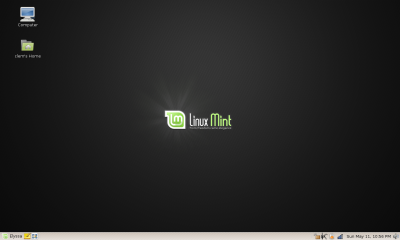
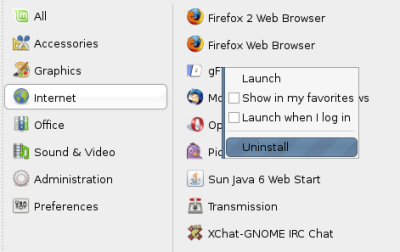
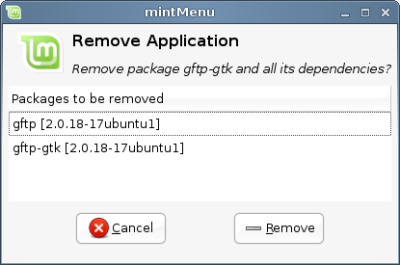
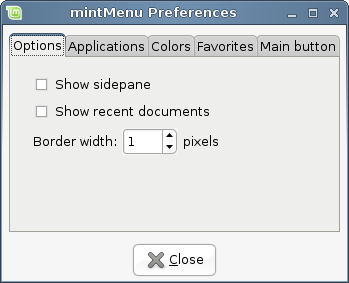

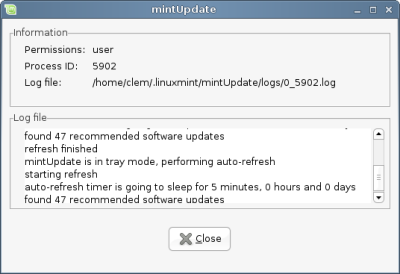
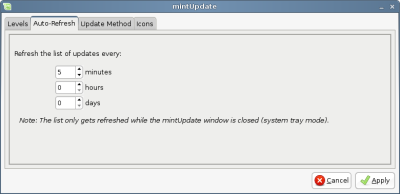
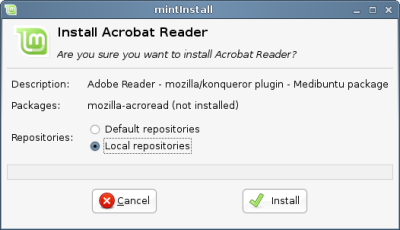
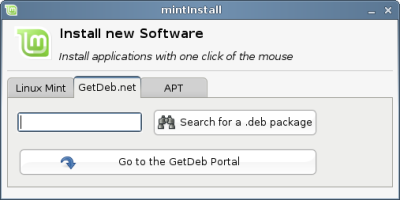
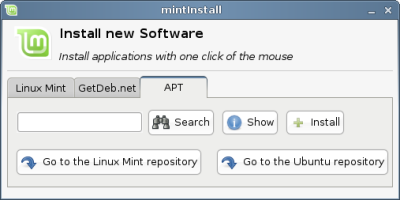

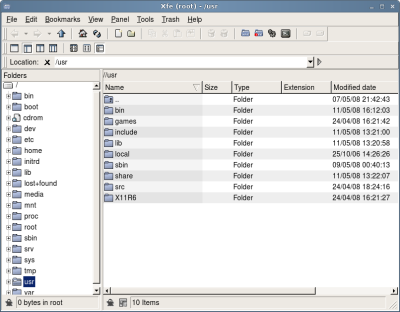
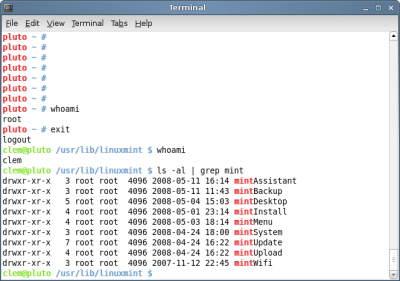
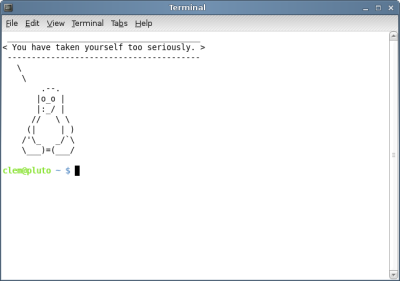

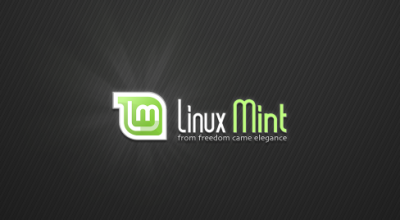

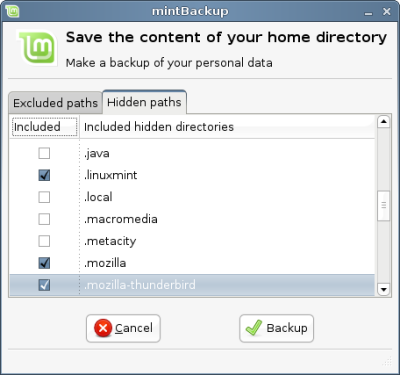
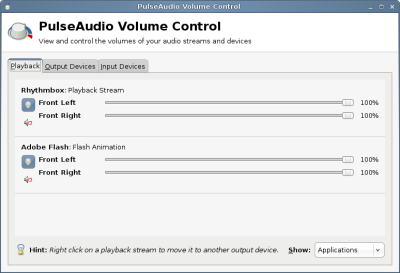
No comments:
Post a Comment